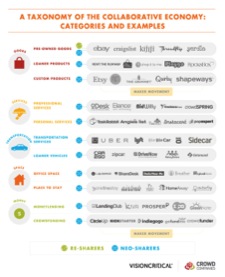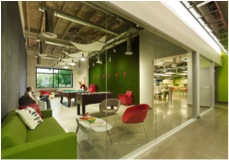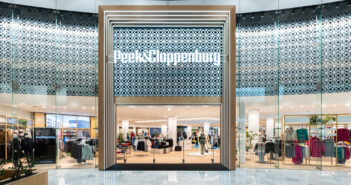The collaborative economy is thriving, as people and companies progressively choose to share goods, services, funding, transportation and real estate.
share goods, services, funding, transportation and real estate.
The concept of the collaborative economy was defined by Jeremiah Owyang as the convergence of three ideas: the sharing economy, the maker movement, and the “co-innovation” movement.
The same notion can be applied to collaborative working spaces, where the central requisite is the creation of common areas for people to share ideas and create innovative solutions.
Many companies are taking advantage of this trend to grow their businesses and create new products, which increase revenues. Some of the most successful examples are described in the image to the right.
These companies share two important characteristics, innovation and the use of cutting edge technology. These two elements are fostering the growth of the collaborative economy, pushing its boundaries even further.
With the rapid growth of this industry, attitudes towards collaboration are changing dramatically. The general population is becoming more open and accepting of the concept of sharing to create value, not only by the reduction of costs but also by the generation of new ideas and the implementation of a new concept, the collaborative group.

Mixed use retail and leisure: What happens next? – White Paper
Reshaping current attitudes will be a key driver for the success of the new collaborative workplace, as individuals and companies alike, begin to contribute to the shared economy. A positive perspective towards a collaborative workplace will enable decision makers to implement the concept more easily without resistance from employees.
Successful collaborative spaces require an engaging and productive environment, a management team that fosters collaboration as well as cooperative employees who recognize the advantages of an innovative workplace.
Along with a change in attitude, several other requisites are important to make a work environment collaborative and innovative. The following are the most relevant characteristics of a collaborative workspace:
- Technology is the most important as it allows employees to be mobile. In this regard the most important fixtures are a wireless environment and mobile working devices.
- Creation of interactive common areas, with different working environments and wide availability of cutting-edge technology devices, such as interactive whiteboards and media spaces to make meetings more productive. These spaces should be located in strategic locations, have some amenities and be informal in order to constantly attract and create interaction between co-workers.
- Private spaces with the ability to close doors for private meetings and conversations.
- Flexible office furniture that easily adapts to the co-working environment and can be replaced or updated as necessary.
- Innovative design that supports sustainability and takes advantage of natural light.
Although these characteristics are essential to make the workspace cooperative and to foster innovation, it is also important to shape the collaborative fixtures to the company’s culture and objectives as well as to the employees’ characteristics. In some specific industries and departments within a company, collaborative environments may even have a negative impact on employees’ performance.
From the company perspective, collaborative environments are critical since these bolster innovation and productivity. Both innovation and productivity are key factors for success in a fast changing and dynamic business environment. Companies who choose to neglect these issues will lose competitiveness and struggle to operate in the collaborative economy of the future.
Despite rapid growth, especially in certain sub-markets, collaborative workspaces are currently just a small portion of the entire global office stock. .According to CBRE, overall collaborative workspaces represent just 0.1% of the total stock available in the London market and an even smaller percentage in other markets.
Interested in sustainable real estate? Check out the MIPIM Innovation Forum at MIPIM!
Written by: Bernardo Simões
Bernardo is a 2014 MSRE Candidate at the University of San Diego and received his Bachelor of Science in Business Administration at the Catholic University of Portugal. You can reach him at bsimoes@sandiego.edu.
Sources:
Vision Critical – Sharing is the New Buying report
Monster commercial – How to design innovative collaborative co-working office space By Maurice Benatarx
CBRE – The Work Shop – Report 2013
Top image credit : Photobank gallery





